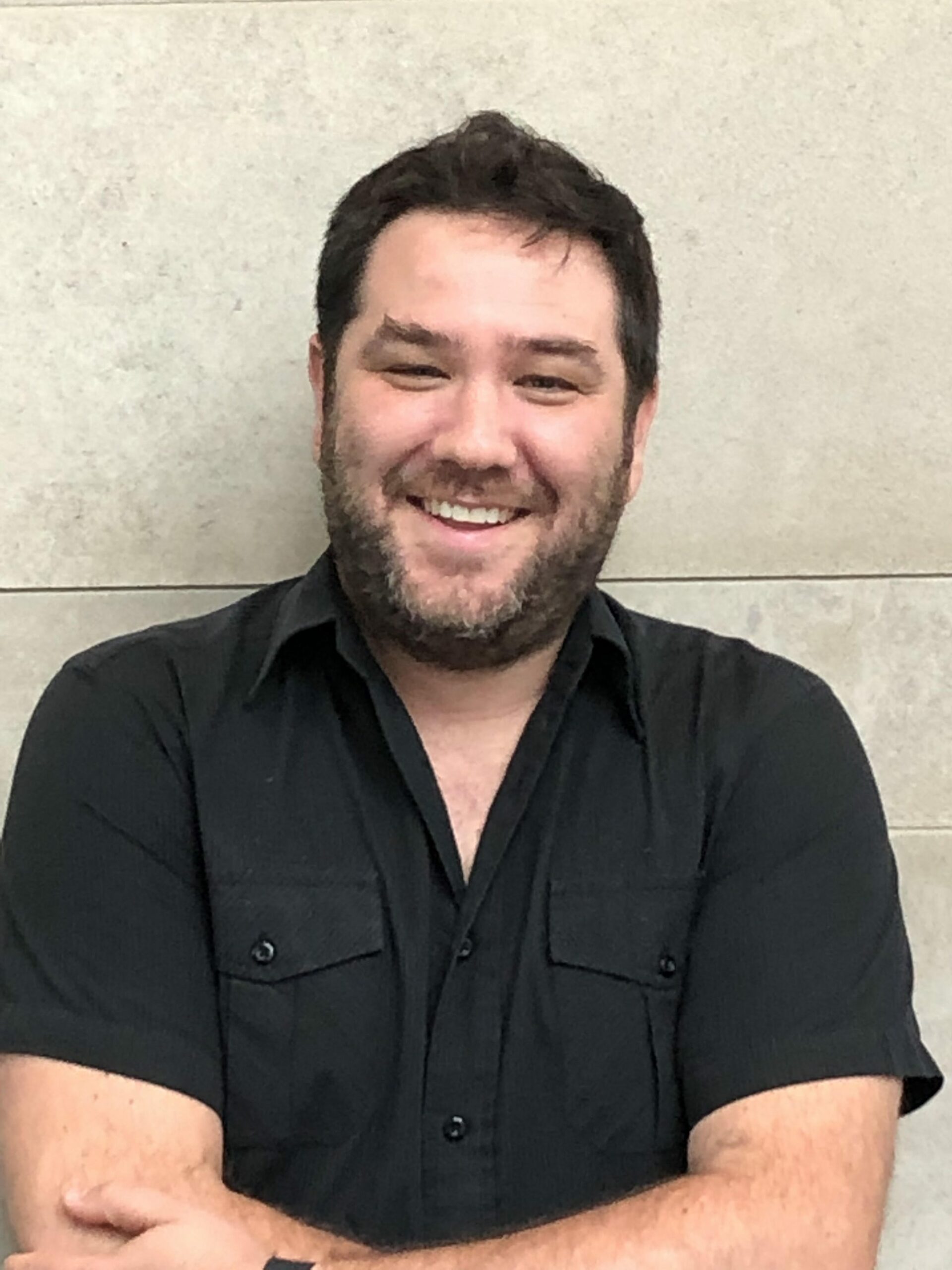Local News
From Argentina to Winnipeg – creating opportunities in the IT sector for marginalized groups

By BERNIE BELLAN The following article about Pablo Listingart borrows heavily from articles written by Rebeca Kuropatwa in 2019 and 2021 for The Jewish Post & News. It is also based on a recent phone interview I conducted with Pablo, as well as material we received from a publicist.
Back in 2012, husband and wife, Pablo Listingart and Solange Flomin began seriously thinking about leaving Argentina.
This, explained Listingart, was “because of the political situation and other aspects [that] were degrading. We also wanted to have the experience of living in another country.”
So, the couple began traveling to explore other countries. They went to the U.S., but did not feel it was a good fit. Then, they went to several countries in Europe, but with a similar result.
Next up was Canada. “My wife had a cousin living in Vancouver and she spoke really highly about Canada,” said Listingart. “We started doing our research and sent emails to several Jewish communities. A couple answered, but communication with Winnipeg was more responsive.”
In October 2013 Listingart visited Winnipeg (while Flomin was pregnant with their first child). “After only two days, I fell in love with the city, the brown of the trees, how quiet it was,” said Listingart. “So, I called Sol and told her that this was the place.”
When Listingart returned to Argentina, he and Flomin started working on their application. The process took 10 months, as their son was born in the middle of the process.
The family made their move to Winnipeg in early March 2015.
Flomin and Listingart feel at home in Winnipeg. “We feel more Canadian than Argentinean, with cultures, values, and everything,” said Listingart. “That is the reason we are here, actually. We did not come for economic reasons. We didn’t feel that comfortable in terms of values and principles back there. Once I came here, I fell in love with the Canadian culture and values.”
Listingart had started up a charity in Argentina in 2011 that taught participants how to do software development. In Winnipeg, Flomin urged him to create the same kind of start up.
Today, Listingart’s charities, called Comunidad IT & ComIT, have operations in Latin America and Canada.
As an immigrant himself, Pablo explains that he started ComIT after immigrating from Argentina to Manitoba and seeing a gap in Canada’s education system. He noticed many individuals working survival jobs to help support their families, unable to get the training they wanted to better their positions.
In response, he developed a market-driven curriculum that he initially delivered to students by covering expenses himself. In 2016, Pablo Listingart became the founder and executive director of ComIT, a Canadian non-profit organization that offers free technology and professional skills training to unemployed and underemployed Canadians, with a focus on Indigenous, immigrants, visible minorities, and underserved communities. The charity aims to develop a community that links people struggling to overcome employment barriers with companies looking for skilled workers.
Women take up the majority of his enrolment. Many of them feel they can’t enter into a traditional program to enhance their educational skills due to barriers like limited access to funding, training locations, professional requirements, also family obligations, and lack of childcare. ComIT’s curriculum is designed to appeal to people who fall into that category by being free of charge, available online, and taught for only parts of the day.
Listingart and Flomin began running the charity together around raising their two kids.
“I had worked for several companies, like Microsoft, IBM, and others,” said Listingart. “Back in 2011, I thought about giving back to the community and society, and so I decided to start this charity. Those years back in Argentina were kind of busy and, with all the political issues over there, we decided to migrate here to Winnipeg.”
With the perpetually expanding operation of their growing charity, Listingart, as the charity’s executive director, was kept busy, and for the first few years of operating ComIT he even found time to build mobile applications and websites, but these days Listingart says that running ComIT takes up his full time.
ComIT in Canada began by running pilot programs in Winnipeg and in Kitchener-Waterloo. In Winnipeg, Listingart ran the classes with the support of ICTAM (now TechMB), and, in Kitchener-Waterloo, two of the main Canadian sponsors were Communitech and Google.
“That went really well, in terms of people getting jobs, so I kept doing it,” said Listingart. ComIT jumped from offering two courses to 22 courses per year – covering all the Canadian territory.
By 2023 Comunidad IT and ComIT had helped 4500 people find jobs (1200 in Canada). “Unfortunately,” Listingart explained, “people drop out for different reasons through the process, so we are not able to help everyone who joins the courses.” During our phone interview Listingart said that his charities have now trained over 6,500 students altogether.
“About 70 percent get jobs within six months of the training,” said Listingart. “We follow up with them, help them with their resumés…We have a free platform companies can access and see the resumés.”
Training is conducted in classrooms and online. “The impact is always bigger in person”, said Listingart. “We started developing content to be delivered online prior to the pandemic, mostly for Latin America, as a way to reach people we couldn’t physically reach, not having the funds to go to 15 countries, and then during the pandemic we developed even more content to continue running our training.”
While Listingart would love to be able to operate everywhere around the world, financially, that is not yet viable, but he was able to expand what he offers to all of Latin America and across Canada.
Listingart is no longer teaching in the program, due to a lack of time, though he does visit the classes when he is able. While only two years ago, ComIT was training 300 people a year in its courses in Canada, it has now grown to the point where 600 people a year are taking courses from ComIT.
As Listingart told me, “We actually doubled the number of students we had when I talked to Rebecca (in 2021). What happened, he explained, was “we were in the middle of the pandemic and we moved all the training online due to COVID. We are still running courses online, and that has allowed us to reach out to more people.”
“So nowadays we have students from Prince Edward Island to the Yukon,” Listingart added.
I asked Listingart where the funding for ComIT comes from?
He answered that most of it comes from the private sector, but a portion comes from a federal government agency known as PrairiesCan.
So, how exactly does ComIT conduct classes? I wondered.
Training is conducted by instructors in classrooms or online, where they reach their students via Zoom.
At ComIT, all training is provided free of charge. Trainees can hold a full-time job, while training in the evenings or mornings for only a couple of hours a day for three months.
While right now ComIT is conducting eight different classes, Listingart explained,\ – “with eight different instructors,” because “we run different topics along the year, it’s usually between 12 to 15 people that get involved in teaching courses.”
And what do students learn in those courses?
The program consists of three months of intensive instruction in various fields related to software programming.
“Most of the people that we train go on to be programmers,” Listingart said, adding that the majority of our graduates become software developers or website designers,” adding that “some are working in cybersecurity or other hardware related fields.”
The minimum age to register for a ComIT program is only 18 and there is no prerequisite level of education required.
While a good many of ComIT students are immigrants who may lack the kind of English language skills necessary to be hired by many employers, ComIT also has many Indigenous students as well as non-indigenous Canadians who are struggling.
Still, as Listingart says, students in the program have to be able to communicate. They “don’t need perfect English,” he adds, “they don’t even need a mid-level English,” but they do need “some basic communication skills.”
But it’s not simply a matter of someone applying to take ComIT courses and being automatically accepted, Listingart explained.
“We ask them (prospective students) a lot of questions,” he said. “We ask them what their goals are, like, if they are pursuing a career in IT or if they are interested in that… many things to gauge their interest. Those conversations help us understand whether these people can communicate with others.”
When it comes to finding jobs for graduates of the ComIT program, Listingart says that he and other members of his team meet with local employers who are looking for IT talent and discuss their exact needs within the industry.”
“We train them in what companies need right now,” said Listingart. “So, let’s say I go to Saskatoon and I talk to 10 or 15 companies over there…about 70 percent get jobs within six months of the training,” he noted. “We follow up with them, help them with their resumés…We have a free platform companies can access and see the resumés.”
Skip the Dishes, for instance, was on the fence for a very short time. They hired five out of seven ComIT trainees almost on the spot after they were interviewed – and soon after, the company became one of the charity’s local sponsors. To date, Skip the Dishes has hired 55 ComIT-trained students.
“My goal, so to speak…is to give opportunity to people who can’t afford other types of training and give them a first chance,” said Listingart. “We mention this at the beginning of every course. They only have one chance with us. We don’t give second chances. If they drop out for any reason, regret it, and want to come back, they can’t. I have hundreds of people on the waiting list to take courses. For me, this is a way to teach the value of work and, while doing it, you have the chance to work a job that pays well, that you can grow and learn…And, it’s not just for nerds, it’s creative work.
“My goal also has been to make the biggest impact that I can and …I’m happy with the results.”
If you are an employer interested in finding out more about ComIT or you know someone who might benefit by taking the program, visit
Local News
Thank you to the community from the Chesed Shel Emes

We’re delighted to share a major milestone in our Capital Campaign, “Building on our Tradition.” Launched in November 2018, this campaign aimed to replace our outdated facility with a modern space tailored to our unique needs. Our new building is designed with ritual at its core, featuring ample preparation space, Shomer space, and storage, creating a warm and welcoming environment for our community during times of need.
We’re grateful to the nearly 1,000 generous donors who contributed over $4 million towards our new facility. A $750,000 mortgage will be retired in November 2025, completing this monumental project in just seven years.
We’re also thrilled to announce that our Chesed Shel Emes Endowment Fund has grown tenfold, from $15,000 to $150,000, thanks to you, the Jewish Foundation of Manitoba’s FundMatch program, and Million Dollar Match initiative in 2024. Our fund helps ensure that everyone can have a dignified Jewish funeral regardless of financial need.
As we look to the future, our goal remains to ensure the Chevra Kadisha continues to serve our community for generations to come. Our focus now shifts to replenishing our savings account and growing our JFM Endowment fund.
We’re deeply grateful for your support over the past several years.
It’s our privilege to serve our community with care and compassion.
With sincere appreciation,
Campaign cabinet: Hillel Kravetsky, Gerry Pritchard, Stuart Pudavick,
Jack Solomon, and Rena Boroditsky
Murray S. Greenfield, President
Local News
Winnipeg Beach Synagogue about to celebrate 75th anniversary

By BERNIE BELLAN (July 13) In 1950 a group of cottage owners at Winnipeg Beach took it upon themselves to relocate a one-room schoolhouse that was in the Beausejour area to Winnipeg Beach where it became the beach synagogue at the corner of Hazel and Grove.
There it stayed until 1998 when it was moved to its current location at Camp Massad.
On August 2nd members of the synagogue will be holding a 75th anniversary celebration.

As part of the celebration anyone who is a descendant or relative of any of the original members of the first executive committee (as seen in the photo here) is invited to attend the synagogue that morning.
If you are a relative please contact Abe Borzykowski at wpgbeachshule@shaw.ca or aborzykowski@shaw.ca to let Abe know you might be attending or for more information about the 75th anniversary celebration.
We will soon be publishing a story about the history of the beach synagogue, which is something I’ve been writing about for over 25 years.
Local News
Vickar Family cuts ribbon on new Tova Vickar and Family Childcare Centre

By MYRON LOVE In the words of Larry Vickar, the Shaarey Zedek’s successful Dor V’ Dor Campaign “is not only a renewal of the synagogue but truly a renewal movement of Jewish life in our community.”An integral part of that renewal movement was the creation of a daycare centre within the expanded synagogue. On Monday, June 23, Larry and Tova Vickar cut the ribbon, thereby officially opening the Tova Vickar and Family Childcare Centre in the presence of 100 of their family members, friends and other supporters of the project.
The short program preceding the morning ribbon-cutting began with a continental breakfast followed by a welcome by both Fanny Levy, Shaarey Zedek’s Board President, and Executive Director Dr. Rena Secter Elbaze. In Elbaze’s remarks, she noted that Larry and Tova wanted their family (including son Stephen and family, who flew in from Florida) and friends at the event to celebrate the opening of the Tova Vickar and Family Childcare Centre, “not because of the accolades, but because, as Larry put it, he hopes that their investment in the congregation will inspire others to do the same.”
“When Larry and I spoke about what this gift meant to him and the message he wanted people to take away,” she continued, “I couldn’t help but connect it to the teachings of Reb Zalman Schachter-Shalomi whose book – Age-ing to Sage-ing – changes the whole way we look at the concept of ageing and basing it on our ancestral teachings.”
She explained that his concept of “Sage-ing” is based on three key ideas – Discover your meaning and purpose; accept our mortality and think about the legacy you want to leave.
“Larry spoke about these exact concepts when we met,” she said.
Elbaze also noted the presence of Shaarey Zedek’s newly-arrived senior Rabbi Carnie Rose, former Rabbi Alan Green, and area MLAs Mike Moroz and Carla Compton.
Larry Vickar expressed his great appreciation for all those in attendance. “Tova and I are deeply moved to stand here with you today for this important milestone in our community”, he said. “We are grateful to be surrounded by all of you, the people we care about, our family and friends… you who have touched our lives and played some part in our journey.”
